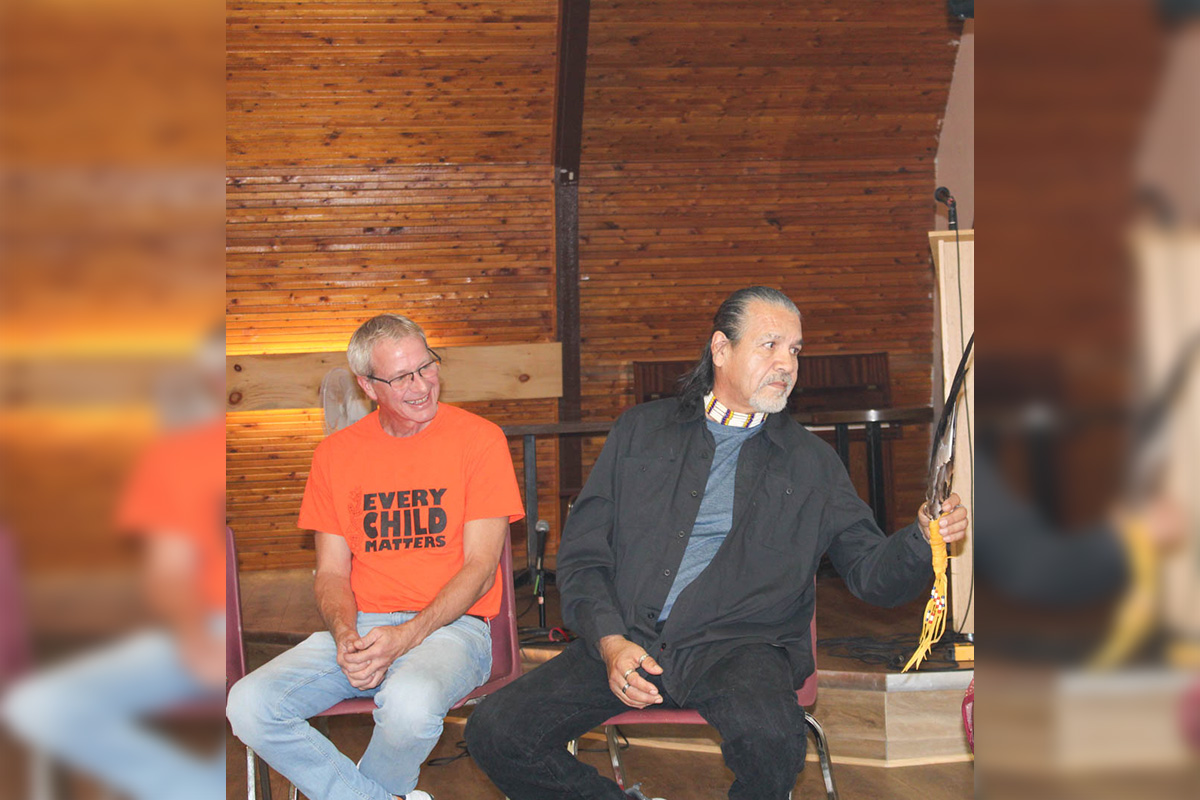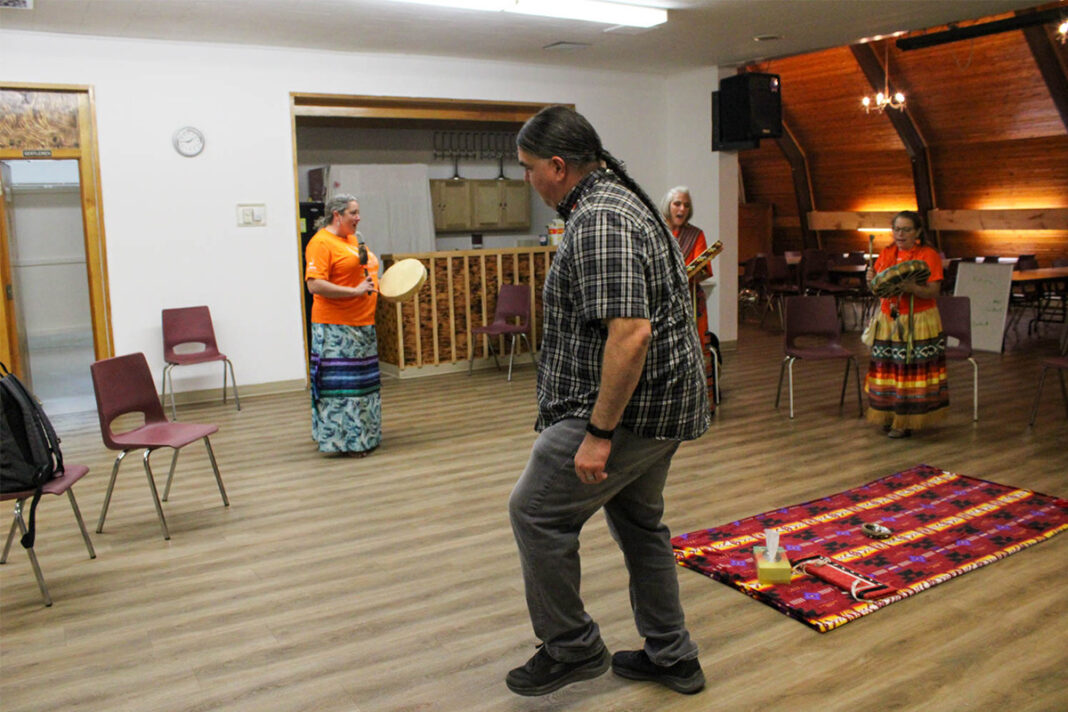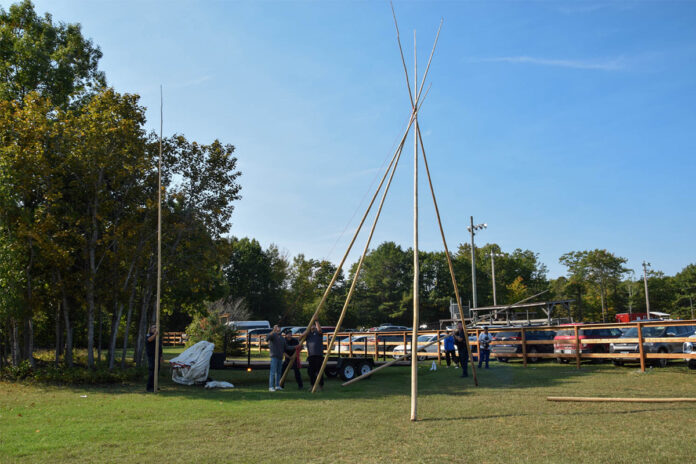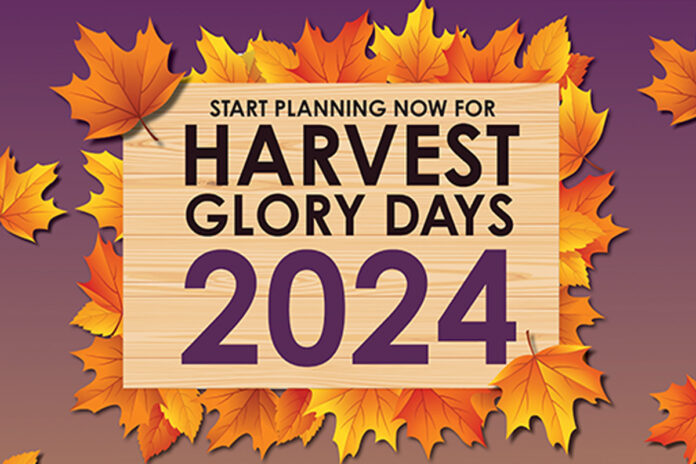LITTLE CURRENT—On September 30, a group of people gathered at the Royal Canadian Legion Br. 177 in Little Current to honour Orange Shirt Day with a Healing Circle. “We call this ‘Healing Hearts Together’ because we didn’t want to give it the Truth and Reconciliation title, that’s a government name given to this day,” Lizanne Leclair explained. Ms. Leclair, along with Juanita ‘Sky Woman’ McNichol, board members of the National Indigenous Health and Wellness Association (NIHWA) of Sudbury organized the event.
A smudging began the circle and Bobby Osawabine, of Wiikwemkoong, was the guest speaker and facilitator. He is a Warrior Sundance Chief, Blanket Man, Ceremonial Judge and he is a survivor. “I’m also an ex-federal inmate,” he said. He spoke at great length about his life, the abuses he suffered at the hands of the Church, and he held nothing back. The anger he felt, the night terrors he suffered, the reliving, in graphic detail the horrors he endured, the heavy drinking that followed each time the night terrors would come.
“When I began to do these talks, about my life, it was hard on me. I couldn’t do it. But now when I give these talks I’m very specific. The abuse and how it was done… It’s been a long time now. I can talk without crying. When I was 19 or 20 years old, that’s when it hit harder. I was already dealing with my own abuse, with the Jesuits and what they did to me—hanging me in a closet for hours at a time, invading where they shouldn’t be invading, abusing me—so I’m dealing with my own stuff and then my mother told me of the abuse she suffered and the horrors she had seen. So graphic and violent, it was too much to handle.”

Mr. Osawabine discovered that in opening up and telling his story, being specific about the abuse and how it was done, the night terrors came less often.
“I tell my story, to let people know they are not alone,” he said. He deals with young people now, and he finds they are more willing to talk with him, an ex-con, than they are with a licensed psychologist. “And every time a teenager tells me their story, it’s identical to the last and the last and the last,” he said, sadly.
When Mr. Osawabine took his eagle feather and passed it on, asking everyone in the circle to share whatever they needed to share, a great deal of pain, anger and frustration came pouring out. The few non-Indigenous participants had their eyes opened. They not only heard of the abuse of parents and grandparents, but of what those speaking have suffered. Not only in their past, but the ongoing frustrations they continue to face—a mistrust of government and organizations that, to this day, are discriminatory. The abuse continues, not always as overtly as in the past, but it is ever-present in their lives. In this safe space, this circle of healing, all were able to speak their anger, their hurt and shed their tears, without judgement.
The mood lightened a bit when Wesley Cleland was introduced. He joined the group to talk about dance. “I’m not originally from these parts,” he said, “I grew up in Pontiac, Michigan, and I’ve travelled around a lot.” He’s often asked by schools if he’d come teach dance to the kids. “Powwow dancing is about storytelling. Technically, I can’t teach you how to dance, because you’ve got to tell your own story,” he explained. The way he was taught, Mr. Cleland says, there are no rules, no real structure, not like ballroom dancing or line dancing. He talked about the drums and their rhythm being the heartbeat of Mother Earth, our own heartbeat. He then demonstrated the heartbeat step of pow wow dancing. “It’s very important to follow that rhythm of the drum,” he said. “You want to have that balance with the drum. The drum will tell you what to do.”
Mr. Cleland spoke about the travelling he’s done and the friends he has made through powwow dancing—“extended family,” he called them, “who’d open their homes to me. That’s been the greatest gift I’ve gotten, the friends I have made.” He compared styles of the southern states and out west to the styles in this area, describing different types of dress and traditions and the difference between men’s powwow dancing and women’s. Mr. Cleland was prepared to demonstrate further and have everyone get up and dance, but lunch had already been postponed over an hour.
Following lunch, Mr. Cleland did dance while several of the women, with hand drums, sang. One of the songs was introduced by Sky Woman, a healing song first introduced to the Indigenous women in the Kingston Penitentiary when many of them, unable to go home or see their children, were committing suicide. A grandmother spirit came down and taught the song to one woman, who taught it one by one to all of them, and their healing followed. Demonstrating what Bobby Osawabine said during his talk: “Our language is medicine,” he said.
The day was long, filled with openness, pain and healing.





